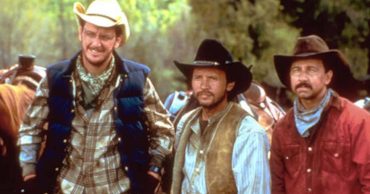
As obscure as some names become in the history of cinema it’s still important to remember them since they’ve contributed at least something if not a lot to the business and deserve that recognition. Sergei Eisenstein (read it carefully, it doesn’t say Einstein) was a very important character in the history of cinema since he was among the pioneers that helped make the industry what it is today despite the fact that he was one of the many that was treated rather unfairly in his time thanks to his political leanings. Like a lot of people from his generation and era he had to work a great deal harder to be noticed and to finally put his name in the annals of history so that he might be remembered. The fact that many people don’t know much if anything about him isn’t too surprising, but it’s enough to say that those in the film industry should have at least heard of him at least once or twice throughout their tenure.
Here are a few things you probably didn’t know about the man.
20. Son of a Shipbuilder
Sergei Eisenstein came from a brilliant and talented family. Early on he learned attention to detail and an appreciation for the mechanics of creation from his father who was an engineer and shipbuilder. Though his career choices broke from the more traditional end of science, filmography is certainly technical and requires a good deal of precision. His formative years likely gave young Sergei the framework on which he built his success.
19. German Connection
The Eisenstein family certainly had an intriguing history beyond its technical genius. His grandfather was, at one point, a German Jew, but he later converted. Sergei must have felt a deep connection to those roots since he went to the trouble of traveling all the way to Germany. In late 1928 he left the USSR in the company of Grigori Aleksandrov and Eduard Tisse. The trio toured Europe ostensibly to learn about “talkies,” and introduce Soviet artists to the west. He spent time in London, Paris, Zurich, and Berlin that year. He also visited Switzerland and the US before returning home, somewhat involuntarily, in 1930.
18. He Sold Political Cartoons
Early in life, Sergei showed a propensity for the arts. He was an avid reader, and performer, and made time to draw cartoons. Apparently he never quite gave up on the latter hobby, and years after he began attending engineering school he was selling his political cartoons to magazines. These works appeared after the 1917 Revolution, and though little is known about how he may have personally been affected, he did pen and sell these pieces of commentary. Several Petrograd publications put his works in print, though he signed them under the assumed name “Sir Gay.”
His chosen pen-name may have contributed to the later in life speculations about his sexual orientation, though it was hardly the only evidence. He was found in possession of a number of quite homoerotic artworks at one point. Whether he was merely a great lover of art or personally attracted to other men is not known for certain, and merely being artistic was reason enough to make crude connections during the era in which he lived.
17. He Planned to Become an Engineer
From an early age, Sergei planned to follow in his father’s footsteps and become an engineer. He was brilliant and fluent in at least four languages, German, French, Russian, and English. As a child, he attended Realschule, a science-oriented academy, despite his early forays into theater and drawing. As he grew older he attended the Institute of Civil Engineering in Petrograd to continue his studies beginning in 1915. Not coincidentally this was the same school his father had attended. He made time for attending avant-garde theater and privately studied Rennaissance era art as well during his time in Petrograd.
16. A Costume Designer
In 1920 a young Eisenstein moved on from the army. He attended the General Staff Academy and from there he immediately became a part of the First Workers’ Theater of Proletcult. In addition, to set design, he made costumes. In some ways, this was similar to his time in the army where he also produced theater. In fact, his successes in the theater were many and he was lauded for his many talents. Had he not transitioned to film it is likely he still would have been famous for his work in the world of Russian performance art.
15. He was Given the Stalin Award
Officially deemed the State Stalin Award, this prize was only issued annually for a few years, from 1941-1954 in lieu of the USSR State Prize. Recipients were typically outstanding achievers in the fields of architecture, arts, literature, mathematics or science and often the work itself rather than the individual was awarded for advancing the cause of socialism or the Soviet Union as a whole. Eisenstein’s work Ivan the Terrible, Part One in 1943, was the work deemed worthy of this prestigious award.
14. Eisenstein Taught at the World’s Oldest Film School
Though he has also been credited with helping to actually build the school, Eisenstein was a teacher at the Moscow Film School. The school was actually founded in 1919 by Vladimir Gardin, another well known Russian film director. Though not as glamorous as producing a film, it is important to note that part of what undoubtedly made Eisenstein’s career so notable was his scholarly work and essays on the topic of cinema.
13. He Loved a Disney Princess
As odd as this may seem, Eisenstein cited an animated Walt Disney film as the greatest work of all time. For reasons unknown, he stated on at least one notable occasion that Snow White was the greatest masterpiece of cinema ever created. It’s a little hard to think of the high pitched and saccharine princess as one of the great film achievements in all of human history, but she is far from the only Disney princess to make film history.
12. He was Voted One of the Top 50 Best Directors of All Time
Sandwiched between Preston Sturges (#28) and Fritz Lang (#30) on Entertainment Weekly’s 1996 list of the best directors of all time, Eisenstein was the only Russian included. Though his time in the USA was short, and he did not actually shoot any film here because of conflicts with industry moguls, he still gets a place in our, and indeed all of film history alongside other greats. Alfred Hitchcock may have swung the top billing, but he wasn’t the creator of montage, a stile widely used to this day, nor did he found a film school of his own.
11. Sergei Eisenstein Only Made Seven Films
As the father of film montage, Sergei Eisenstein has many very impressive credits to his name. You might think the founder of a film school would necessarily have extensive film credits to his own name, but it is sadly not the case. In the entirety of his career, Eisenstein only ever made seven films. They are brilliant and moving. At least one was so powerful it was banned. Still, at the end of his illustrious career, this brilliant director had less than a dozen films in his personal repertoire.
10. He was 50 years old when he passed away.
He’d already suffered a heart attack before his passing and it took him nearly a year to fully recover. The second one however was what finally proved to be too much for his body to handle as it was his end. The fact that he was only 50 years old seems to argue that he was either born with a congenital heart defect that could have been genetic or he simply pushed himself too hard. It could have been both of those as well.
9. As part of the Red Army he served as an engineer.
It doesn’t sound as though he was a combatant in the traditional sense but if you understand the function of an engineer in any situation then you’ll see just how important they really are to the continued success of those around them.
8. Cinematic montage is considered to be one of his biggest contributions to film.
A lot of people know what a montage is, short shots that are put together to condense time and information within a short sequence. Eisenstein was considered to be the man that made this type of filming technique relevant and brought it to the forefront of the cinematic industry.
7. There were coins with his image printed in 1998 by the Bank of Russia.
It might seem as though entertainment isn’t much to crow about but when it comes down to it entertainment and those that strive to make it something worthy of attention are those that allow people to at least dream and aspire to something greater than the world they know. Entertainers in any shape or form use their own dreams to inspire others and are worthy of recognition.
6. He spoke fluent Japanese and used haiku quite often to describe his theories on montage.
In some ways this seems like more of a whimsical and perhaps even boredom-induced practice that he might have entertained, but in truth when a creative person is bored or in need of an idea their mind will tend to wander in every possible direction until it finds a worthy outlet that keeps them occupied for at least a few minutes.
5. Sergei was one of the founders of VGIK in Moscow, one of the world’s oldest film schools.
The fact that many people don’t know his name isn’t hard to imagine, but the research that exists to find out a little bit about him would be, you would think, something that film schools all over the world might want to add into their curriculum without fail.
4. At one point he was hired by Paramount and was then deported as a Communist.
He did make his way to America and was signed to a contract at one point but when the US was so busy condemning and deporting people for their views he was one of those on the list for deportation for openly being a part of the Communist party. It wasn’t a particularly friendly time, but he still kept on working wherever he could.
3. Mexican culture had a profound impact on his work.
Sergei obviously wasn’t a man that was stuck in one mode that didn’t allow him a lot of originality or creativity. He found the cultures of others to be fascinating and was enamored of Mexican culture in a way that was almost obsessive at one point.
2. He did spend time in a mental facility.
This was apparently due to a bout of depression over his finances and not being allowed to edit a film that he’d made, which seems rather odd when you consider that many people suffering depression from such things these days are either given therapy or medication to get through such episodes.
1. There was question about his sexual orientation.
He was married for some time but never had children. Sexual orientation is for each person to decide but others tend to make their own assumptions all the time since it seems to be that if a person is married and doesn’t try to make a family then they must be hiding something. That’s been the rumor at least throughout the years.
Sergei is someone that people should be willing to research if they want to go into the entertainment industry, especially if they want to direct. Here are what we consider to be his finest movies:
1. Strike
‘Strike’ was a silent film that was made in the Soviet Union by Eisenstein in 1925. It was his debut full-length feature film and was acted by the Proietcult Theatre. The film was composed of six parts. Between completing production of this film and its release, Eisenstein wrote an influential essay titled ‘Montage of Attractions’. The film is set in 1903 and is about factory workers in pre-revolutionary Russia.
2. Battleship Potemkin
Eisenstein made ‘Battleship Potemkin’ in the same year as ‘Strike’. This is also a silent film that was made in the Soviet Union and it was produced by Mosfilm. The film starred Aleksandra Antonov, Vladimir Barsky, and Grigori Aleksandrov. It is a dramatized version of the 1905 mutiny which involved the crew of Potemkin, a Russian battleship, rebelling against their officers. In 1958, the Brussels World Fair named this film the greatest film of all-time.
3. October
The full name of this film is ‘October: Ten Days That Shook the World’, but it is usually simply referred to as ‘October’, as this is what the film was initially called when it was released in the Soviet Union. Eisenstein co-wrote and co-directed this 1929 silent film with Grigori Aleksandrov. The film is a celebratory dramatization of the October Revolution of 1917. This film was commissioned to mark the tenth anniversary of this event. It starred Vladimir Popov, Vasili Nikandrov, and Layaschenko. This silent film was part of Eisenstein’s development of his theories relating to film structure and it used the concept of intellectual montage.
4. Alexander Nevsky
Eisenstein co-directed this epic historical drama with Demitri Vasiliyev in 1938. It starred Nikolai Cherkasov, Nikolai Okhlopkov, and Andrei Abrikosov. The film is about how Prince Alexander, known as Alexander Nevsky, defeated the Teutonic Knights of the Holy Roman Empire in the 13th century attempted invasion of Novgorod.
5. Ivan the Terrible
Soviet Premier Joseph Stalin commissioned Sergei Eisenstein to write and direct this film as he identified himself with Ivan IV of Russia, who this film is about. The film starred Nikolai Cherkasov, Lyudmila Tselikovskaya, Serafima Birman, and Mikhail Nazvanov. This is a two-part film and the first part was released in 144. There was a delay in releasing the second part as this was not released until 1958 as Stalin had banned its release. A third part of the story was intended, but filming stopped after the banning of the second part. What had been completed for the first part was destroyed following Eisenstein’s death in 1948.
 Follow Us
Follow Us



